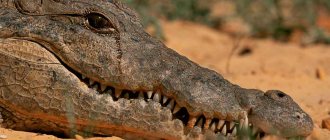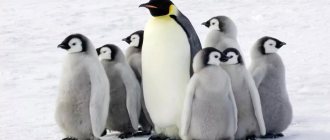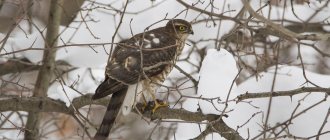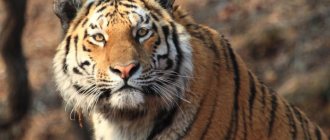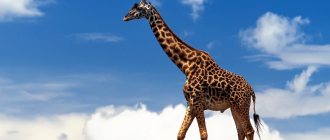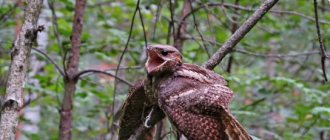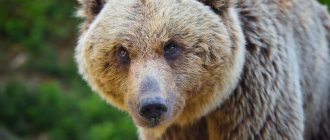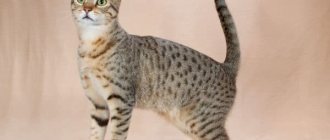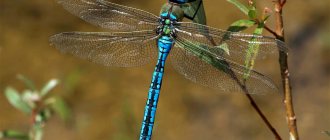Russia's forests make up a significant share of all forest resources in the world (more than 8 million km² of mixed forests are home to rare animals such as tigers, bears and leopards). The remaining areas range from semi-deserts to cold tundra, from snowy mountain peaks to green meadows. The Himalayas and other mountain ranges shield Russia from warmer southern regions, giving much of the country a temperate to subarctic climate with snowy winters, but summers can be surprisingly hot. The eastern regions of Russia experience the harshest winters, but at the same time they are the most biologically diverse.
This article is a list, description and photo of animals living in Russia, structured by groups (mammals, birds, reptiles, amphibians, insects and fish).
Animals of Africa
Amazing and unusual representatives of the animal kingdom of Africa have attracted adventure lovers for centuries. The mainland is home to herbivores, predators and omnivores, some of which are listed in the Red Book.
African elephant
African elephant
African elephants are found throughout the continent, both in the tropical forests of Western and Central Africa and in the south of the Sahara. Animals adapt to any habitat, as long as it is easy to find food and water. They belong to the elephant family and are the largest mammals on earth.
Elephants are divided into two types: forest elephants with tusks pointing straight down, and savannah elephants with tusks turned outward.
The first, darker, weighs approximately 5 tons, the second - 7-12. African elephants feed exclusively on plant foods. The animal's trunk allows it to lift weights of more than 200 kg. Interesting fact : the length of the ears of an African elephant is about 2 m. With their help, animals escape from the heat - when they flap, their own body temperature effectively decreases.
Giraffe
Giraffe
Artiodactyl mammal belongs to the giraffe family. The animal is the tallest on the planet. Male giraffes weigh 900-1200 kg. Their height is 5.5 - 6.1 m, with one third occupied by a slender neck. Females are usually slightly shorter and lighter. The habitat of giraffes is closer to the south and southeast of the Sahara. Unusual animals live most in the woodlands and savannas of Southern and Eastern Africa. Giraffes eat vegetation, preferring acacia foliage.
Zebra
Zebra
Odd-toed ungulate mammals belong to the equine family. The zebra's body length is approximately 2 m, weight - maximum 360 kg. Striped animals are divided into types: savanna, desert, mountain. The first two types live in the steppes in the east of the continent and the southern regions of the continent. Few mountain ones are found in the highlands. Animals are herbivores. To satisfy the body with enough calories, zebras consume 5-7 kg of food per day.
a lion
Lion
Mammal, predator, representative of the panther genus and the cat family. Lions differ in appearance by gender. The largest are males. Their weight and body size depend on the subspecies of the animal. On average, the weight of a male is 180-220 kg, the body length is from 2.5 m excluding the tail, the height of the withers is 120-125 cm. African lions live south of the Sahara, namely in the west, northwest, east, south -east of the African continent. The favorite habitats of predators are savannas.
Interesting fact : the roar of a lion is very loud and terrifying. The roar reaches 115 decibels, is heard at a distance of up to 10 km, vibrations from it raise clouds of dust.
Rhinoceros
Rhinoceros
The rhinoceros is the second largest animal on the continent. Its weight is 1-3.6 tons, length – 2-5 m, height – 1-3 m. Thick-skinned mammals feed on vegetation, eating about 72 kg of grass and leaves per day. A distinctive feature of the animal is its horn, which consists of the protein carotene and can reach 158 cm. There are two types of rhinoceroses living in Africa: black and white.
Interesting fact : September 22 is officially about. It was founded by the World Wildlife Fund.
Hippopotamus
Hippos
or hippos are representatives of artiodactyls. They prefer to settle in herds on the banks of bodies of fresh water. Despite their terrifying appearance, mammals eat plant matter. The body length of an adult reaches 5 m without a tail, the height at the withers is about 1.5 m, and the weight is 1.2-3.2 tons. Hippos feed on plant foods and meat, eating up to 50 kg per day.
Chimpanzee
Chimpanzees
live in almost all regions of Africa. The height of adult males is on average 170 cm, weight - 70 kg, females are correspondingly smaller. Chimpanzees are omnivores, and feed on both vegetation and bird eggs, honey, fish, and insects. They unite in groups, electing a leader who ensures that order and hierarchy are maintained.
Ostrich
Ostrich
The only representatives of the ratite family of flightless birds. The largest bird weighs on average 150 kg, height reaches 2.7 m. They prefer to live with zebras and antelopes and move in groups around the territory. Ostriches are capable of reaching speeds of up to 70 km/h, while the bird's step is approximately 4 m. They feed on small reptiles, plant food, and insects.
Interesting: Why don’t polar animals freeze their paws on the ice?
Birds
More than 700 species (about 500 are nesting) of birds are found in Russia, or 7% of the world diversity of species of this class of animals.
Common cuckoo
Cuckoos are solitary birds that are more often heard than seen. The familiar and unforgettable “Peek-a-boo” heralds the start of spring as they return to Europe after wintering in Southeast Asia and Sub-Saharan Africa. These are parasitic birds that lay their eggs in the nests of other bird species. After hatching, the cuckoo chicks push out their rightful occupants and are then fed by their new and unsuspecting foster parents.
Whooper swan
They are large migratory birds that often fly in large V-shaped wedges. The whooper swan has a larger body than the little swan, and unlike the mute swan, it has a lemon rather than red-orange beak color. All three of the above-mentioned species of swans are found in Russia.
mountain goose
Due to physiological and biochemical adaptations, bar-headed geese are able to reach extreme altitudes (where oxygen levels and temperatures are very low) while migrating through the Himalayas. Surprisingly, these geese fly higher than Mount Everest (8848 m), which makes them the record holders for the highest flight altitude among birds.
Brent goose
The brant goose is a small member of the Anseriformes family, with a short beak and tail. The black color of the head and neck is diluted by two small white spots at the base of the head.
Other representatives of the genus of goose found in Russia include the following species: barnacle goose, little Canada goose and red-breasted goose.
Rock pigeon
The rock pigeon is a domesticated species of pigeon that has returned to life in wild or semi-wild conditions. Some of them were domesticated for food, others as carrier pigeons, and others for their beautiful plumage. Wild pigeons typically feed on seeds, but their diet has been diversified by people feeding pigeons in city parks.
Great Spotted Woodpecker
The spotted woodpecker is the most common and numerous representative of the woodpecker family in Russia. Their range covers almost the entire Palearctic, from Great Britain in the west to Japan in the east, reaching North Africa and the Canary Islands in the southwest.
Sparrowhawk
These birds got their name because of their food preferences. Their diet consists of 98% other birds. They are small carnivorous birds with short, wide wings and a long tail.
The following species from the subfamily of hawks also live on the territory of the country: goshawk, short-toed hawk, European hawk, Japanese sparrowhawk, etc.
Common pheasant
Pheasants are one of the most colorful birds in Russia. They are distributed throughout Western Europe, Central Asia and China. The diet of the common pheasant consists of seeds, berries and insects. The preferred habitat is wooded agricultural lowlands, which can provide shelter and food.
Black grouse
Like their close relatives, the wood grouse, male grouse have impressive, glossy black plumage. These are fairly common birds that prefer wooded areas bordering open spaces.
Finch
The finch is one of the most numerous bird species in Europe. These are small songbirds, with the males' characteristic rufous-brown cheeks and chest, and a blue-gray nape; both sexes have distinctive white spots on their wings.
Bullfinch
Bullfinches are small, plump, colorful birds with a bright pink-red chest and cheeks, white undertail and short beak. Usually, they unite in pairs or small family groups, with the exception of the spring period, when they gather in flocks of 50 or more individuals. Bullfinches are widespread throughout Europe and Asia.
Owl
Eagle owls are one of the largest owl species in the world. They are easily identified due to their long body length (56-75 cm), ear-like tufts on the head and bright orange eyes. They are found in various habitats throughout most of the country.
Gray crane
The most widespread species of cranes with a breeding range from Western Europe to Siberia. These are large birds with gray-bluish plumage, black flight feathers, light beaks and dark legs.
Other types of cranes living in the Russian Federation: sandhill crane, Japanese crane, white crane, black crane and white-naped crane.
In addition to the above birds, Russia serves as a home or temporary refuge for the following species: honey buzzard, ptarmigan, Steller's sea eagle, golden eagle, short-eared owl, marsh harrier, great bittern, great grebe, great gray owl, bearded vulture, water rail, raven, capercaillie, blue kingfisher , House Owl, Bustard, Green Woodpecker, Moorhen, Spruce Crossbill, Nightjar, Wren, Gyrfalcon, Blue Tit, Wood Accentor, Coot, Mandarin Duck, Sea Gull, Muscovy, Common Dove, Common Kestrel, Common Goldeneye, Common Harrier, Common Starling, dipper, spectacled eider, tree sparrow, arctic tern, fieldfare, peregrine falcon, buzzard, hooded crow, tawny owl, gray heron, osprey, whiskered tit, long-eared owl, hobby hobby, black-headed warbler, black-throated loon, black-billed loon, black-necked grebe, black swift and others.
Animals of Australia
Australia is home to animals that cannot be found anywhere else except this continent. Also on the mainland there are introduced representatives of the fauna, who managed to get used to the tropical forests and savannas of a unique country.
Kangaroo
Kangaroos
Unusual-looking animals are a real symbol of Australia. The continent is home to several species of kangaroos of varying sizes. Large individuals can reach a weight of 90 kg, and their height can be up to 1.3 m. Mammals can live 27 years. Females have a pouch on their bellies that is used to carry their young after birth. Kangaroos feel comfortable in places where it is hot and dry. Mammals feed exclusively on plant food.
Koala
Koala
Translated from Latin, “koala” means “ashen marsupial bear,” although they have nothing to do with them. They belong to the marsupial family. Mammals live throughout the continent - from the warm north to the cold southern part. Animals feed only on eucalyptus leaves, easily digesting the plant’s poison. The peculiarity is that the koala hardly drinks water, only dew. During the daytime, these cute animals are passive and can calmly sit on a tree for 15 hours.
Platypus
Platypus
A unique animal is a mammal. Weight - 2 kg, length with tail - 55 cm. The animal is clumsy, but is reliably protected from enemies by toxic saliva, which is very dangerous for small animals. Platypuses live in the coastal areas of small fresh rivers, lakes, and wetlands. The daily diet includes mollusks, worms, crustaceans, larvae, and aquatic vegetation.
flying fox
Flying fox
Animals are not related to foxes, but belong to the group of bats. The body length is 6-7 cm, the wingspan is approximately 25 cm. Flying foxes live in any place where there are fruit-bearing trees. Animals love to eat nectar and pollen, especially from eucalyptus and figs, although they are also happy with other berries and fruits. They can fly more than 60 km per night.
Interesting fact : flying foxes prefer to get food at a distance of 20-50 km from their place of residence.
Arachnids
About 10 thousand species of arachnids are found in Russia.
Crab spiders
Crab spiders do not spin webs to catch their prey. Instead, they rely on camouflage and set up an ambush. These colorful spiders blend into the surrounding vegetation, where they lie in wait for unsuspecting victims. Some species can even change color, masquerading as a leaf or flower.
Scorpios
Scorpions were among the first animals to adapt to life on land, 420 million years ago. They are the oldest arachnids found in fossils. Scorpions are especially recognizable by their large, powerful claws, which are necessary for capturing prey. The famous stinging tail contains a pair of venom glands and is used to paralyze its prey. About 2,000 species have been described, living on all continents except Antarctica.
Orb-weaving spiders
Orb weavers weave classic round webs often found in gardens, fields and forests. Their wheel-shaped networks are made up of concentric circles with spokes radiating out from the center and can be about a meter wide. A beautiful large colored abdomen and a small head are observed in females of most species. Males tend to be smaller, do not spin webs, and spend most of their time wandering in search of a mate.
Jumping spiders
There are about 5,000 species in the jumping spider family, they are widespread throughout the planet and have even been found on Everest. They are active hunters with excellent eyesight and do not catch their prey using webs.
Hunter edged
These spiders use the surface of the water in a way that other spiders use their webs. Ripples from insects on the surface of the water are caught by the numerous hairs on the spider's legs. Short, velvety, water-repellent hairs covering the body and legs help walk on water. Spiders quickly glide across the surface of a pond and attack their prey.
Animals of North America
North America has several natural areas, so there are many different animal populations across the continent. Representatives of the fauna easily adapt to a wide variety of natural conditions: areas with high moisture, hot deserts, glaciers.
Raccoon
Raccoon Raccoon
This fluffy animal has a dense 70-centimeter body with a weight of 8-12 kg. Females weigh 3 times less. The owner of a fluffy tail prefers to live in mixed and deciduous forests, on plains and lowlands, often changing locations. The striped raccoon is an omnivorous mammal. The animal's diet includes muskrats, rabbits, frogs, turtles, hamsters, squirrels, and plant foods.
Brown bear
Brown bear
The brown bear is rightfully considered the master of the taiga. The strong mammal lives in the tundra, taiga, mountains, where there is dense green vegetation. The largest individuals can weigh up to 500 kg, the height at the withers is approximately 110 cm, the body length is about 2.5 m, the tail is approximately 15 cm. Despite the fact that the bear is a predator, it eats a lot of vegetation, about 70% of the total diet. Also on the animal's menu are fish, wild honey, berries, beetles, nuts, acorns, and cereals.
American alligator
American alligator
The average length of a male is 4-4.5 m, females no more than 3 m. American alligators live in freshwater bodies of water. Preference is given to standing water. Predators hunt mainly at night. Alligators eat fish, small mammals, turtles, and snakes. During the cold season, animals hibernate or become inactive.
Moose
American elk
A fairly large mammal, it can weigh more than 600 kg. The body length of an American moose is about 3 m, the height at the withers reaches 2.2 m. It belongs to the deer family. Habitat: cool coniferous forests. Elk is a herbivore, so it looks for pasture for food: moss, lichens, grasses, mushrooms, tree foliage.
Interesting fact : moose are big fans of salt. Animals lick stones and eat soil, which is enriched with the mineral.
Nine-banded armadillo
Nine-banded armadillo
Nine “belts” are visible on the animal’s body, which serve as reliable protection. Body weight on average is 6.5 kg, body length - 32-57 cm, tail - 21-45 cm. Animals live in a variety of places, both swampy and arid. Armadillos sleep during the day, and at night they forage for food, including insects, chicks, eggs, mushrooms, small mammals, and reptiles.
Eagle
Eagle
Eagles are large birds of prey. There are many species of birds that have a body length of almost 1 m. Weight varies from 3 to 7 kg. The wingspan is large - up to 2.5 m. Females are generally larger than males. Eagles feed on rodents, lizards, and snakes, which they can spot from a height of 500 meters. Birds can also hunt large animals. Birds obtain food continuously, as they can store food in their crops for several days. Eagles live in pairs all their lives.
Puma
Puma
This unique American animal is a small wild cat. The puma has a height at the withers of 60-80 cm, a body length of 100-190 cm, a tail of 60-75 cm, and a weight of about 110 kg. Predatory mammals live in any natural environment: plains, mountains, coniferous and tropical forests, swampy areas. They can jump to a height of 2.5 m, a length of 6 m, and a movement speed of up to 50 km/h.
Interesting: Bear

